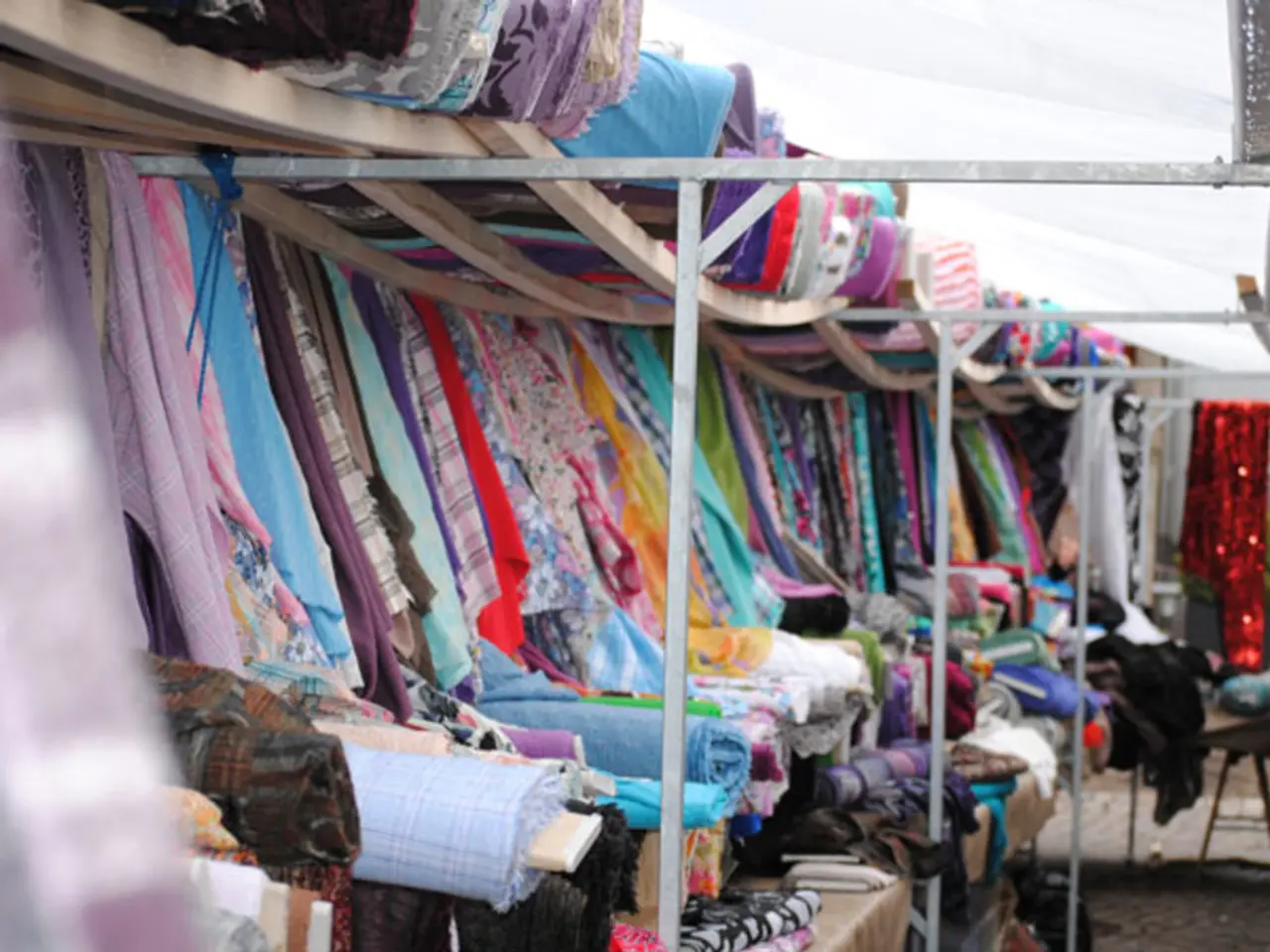Protective Clothing with UV Resistance - Identifying Quality UV-Guard Garments
In the sunny months, protecting our skin from harmful UV radiation is more important than ever. A recent development in sun safety comes in the form of UV protection clothing, which offers superior protection compared to traditional garments.
According to Marion Moers-Carpi, a member of the German Dermatologists' Association, UV protection clothing is a better choice for extended sun exposure, particularly for individuals with sensitive skin. This includes children and those with very pale or red hair.
The gold standard for testing UV protection in clothing is the UPF 50+ rating, which means the fabric blocks at least 98% of ultraviolet rays, offering very high sun protection. This differs from other testing standards like the American Standard AATCC 169.3, which primarily assesses fabric lightfastness and fading resistance. While useful for understanding durability and color retention, this test does not measure UV transmission blocking or sun protection specifically.
UV protection clothing is made of tightly woven fabrics, often from nylon, polyester, or mixed materials. These fabrics offer a UPF of 40 or 50, a level of protection that cannot be achieved by wearing multiple normal pieces of clothing. The Federal Office for Radiation Protection (BfS) confirms that UV protection clothing is suitable for swimming and hot weather.
The Ultraviolet Protection Factor (UPF) measures the protection of textiles against UV radiation, with higher values indicating better protection. Other standards, such as the Australian/New Zealand Standard (AS/NZS 4399:1996) and the European Standard (EN 13758-1), are less stringent and only test the protective effect in the dry and unstretched new state. The UV standard 801 testing includes the garment being wet, stretched, or washed several times, ensuring the clothing maintains its UV protection even under realistic conditions.
UV protection clothing may also be useful for people in certain professions, like road construction, where extended sun exposure is inevitable. It can be beneficial for individuals exposed to intense sunlight for extended periods, such as hikers in high mountains or sailors. When buying UV protection clothing, it's important to look for a UPF of 40 or 50 and the UV standard 801, as it ensures the clothing has been tested under realistic conditions.
In summary, UV protection clothing offers superior sun protection compared to traditional garments. It is light, breathable, and dries quickly, making it suitable for swimming and hot weather. The gold standard for testing UV protection in clothing is the UPF 50+ rating, which measures the percentage of UV radiation blocked by the fabric. Other standards, like AATCC 169.3, assess fabric durability and resistance to sunlight-induced fading but not direct UV protection for the wearer. As a result, when choosing sun protective clothing, it's essential to look for the UPF 50+ rating and the UV standard 801 to ensure optimal protection against harmful UV radiation.
Science has shown that UV protection clothing, which is commonly made of nylon, polyester, or mixed materials, offers superior health-and-wellness benefits by blocking at least 98% of ultraviolet rays, making it a better choice for extended sun exposure, particularly for individuals with sensitive skin such as children and those with very pale or red hair. When buying UV protection clothing, it's important to look for a UPF of 40 or 50 and the UV standard 801, as it ensures the clothing has been tested under realistic conditions for optimal health-and-wellness benefits.




